The words prime lens and budget rarely meet. But if you’re a Nikon Shooter there are some great bargains for not much. These include this triple of 50mm 1:1.8 lens. But each of these has catches and it will depend on what you shoot for what makes sense.
The 50mm 1:1.8 is kinda the awkward little brother to the faster f/1.4 prime. But it’s optically a better bet than your average Kit zoom. Also the cost saving can be massive compared to the faster primes. Currently 50mm 1:1.4 AF-S G retails for a little under £400 on amazon, where as the f/1.8 equivalent is less than £200. The faster lens does not guarantee optical superiority and some feel even at the faster apertures the f/1.8 may have the edge.
But hey that’s a £200 quid lens your talking about. Sure I can get a second hand one for a bit less but that’s not budget is it ? turns out you can get not just a second hand lens for a quarter of that, you can get a new lens.
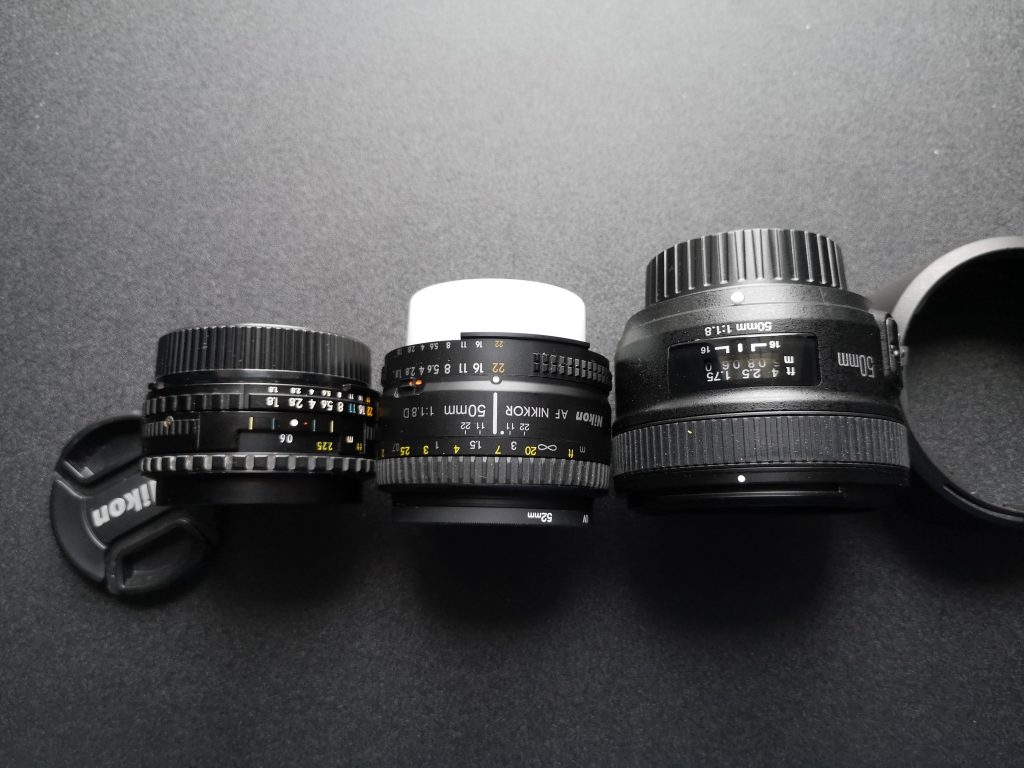
This is where this trio come in. All available for well under a hundred quid. They also all share a 6 elements in 5 groups construction with 7 aperture blades in a double Gaussian design. They are all AI-S but only the 1:1.8D and Yongnuo have electronic coupling. No lens has VR or equivalent image stabilisation.
The Budget Trio
Yongnuo YN50mm f1.8N
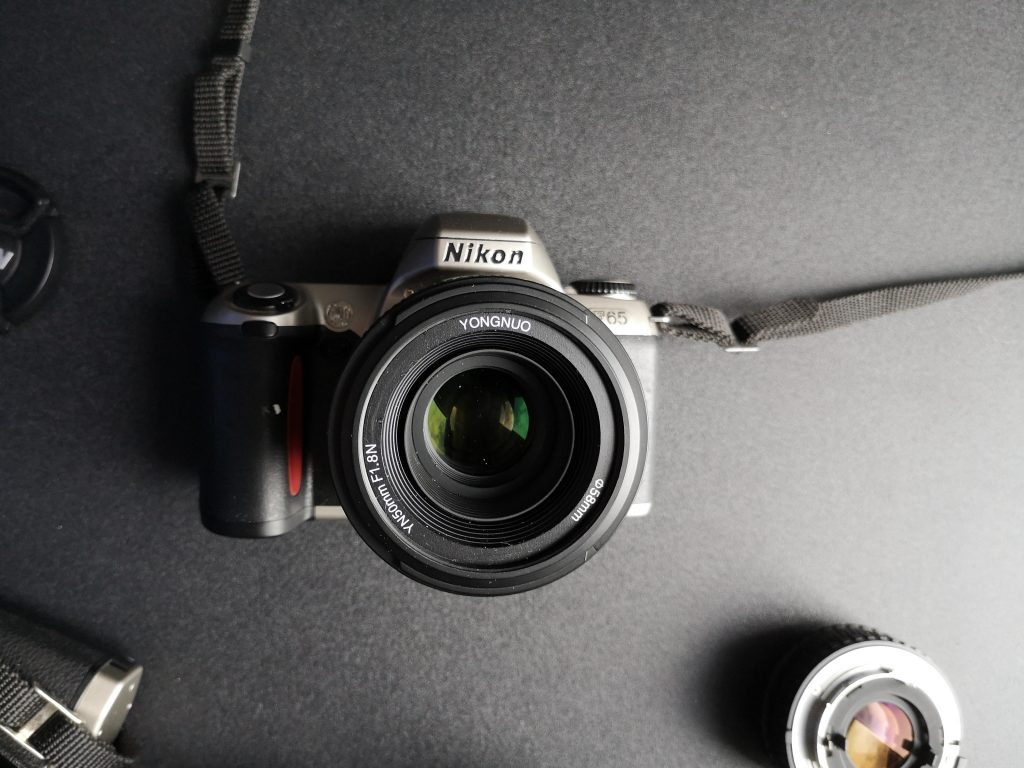
Our 3 lenses are widely available. The cheapest proper lens on sale new in the Yongnuo YN50mm 1:1.8N which you can pick up current for £65.97 on Amazon at the time of typing. I’d advise to hunt around as mines came from Wish for under £50 with some vouchers. It obviously sells as the budget equivalent of the Nikon 50mm 1.8G AF-S which sells for three to four times as much. Yongnuo have a tendency to develop Canon EF lenses based on old Canon designs then port over to Nikon F mount versions later and this is no exception.
It’s big and beefy being the largest of the 3 sizewise. This will be in part due to the motors in lens (AF-S using lens built into lens). these are not exactly silent but aren’t noisy. But there seems little difference to that and the AF-D Nikon.

It’s a G lens so no aperture ring – this limits it’s usefulness on manual focus and some older film bodies but then again the current Nikon equivalents are the same. You can turn off AF and manual focus by a switch. The front element sits quite far back from the lens bezel (all these lens have the same distance to front of focal element. It has the smallest focal throw and literally the focus distance from infinity to 1.5m is tiny as this shot shows. Close focus to 0.45m.
It only narrows to f/16 – the 2 Nikons go down to f/22. However diffraction means you really don’t want to shoot there.

It has a 58mm filter ring and has a bayonet mount that will nicely fit a HB-47 or clone lens hood which is the model recommend for Nikon’s current AF-S 50mm primes. I bought a generic copy for a few quid.
The canon version appeared in 2014 and the first F mount version appeared in 2015. This has been revised at least cosmetically over the years with this lens with the labelling F1.8N on lens bezel being the most up to date. Although not as polished as the AF Nikkor it is well made with a metal mount plate and gold plated contacts. And the company certainly box it well with well detailed branded caps.
AF Nikkor 50mm 1:1.8D

Next we have the now discontinued but still highly regarded AF Nikkor 50mm 1:1.8 D. So you can still find new on the ‘Bay for well under a £100 and second hand for less than the Yongnuo. It uses older AF-D autofocus but unlike the Yongnuo has an aperture dial. As it is AF-D it relies on the camera being unlocked for Manual focus so no switch either meaning it will work straight on a Manual focus body. It includes a lock point at f/22 like all newer aperture ringed AF lenses – this is for late film and dSLR that require you to keep the lens at narrowest setting while they control the aperture. There is a 52mm filter thread but no bayonet mount for lens hood. Focus is down to 0.45m as well

Launched in 2002 as the successor to Nikon’s first 50mm 1:1.8 AF prime the 1986 1:1.8 AF (not a bad lens either). Actually according to Nikon pretty much the same design optically as the older manual focus 1:1.8S which is basically the same lens as the next candidate. It is a plastic bodies lens but the best made of the 3. Regarded by many as the budget classic prime.
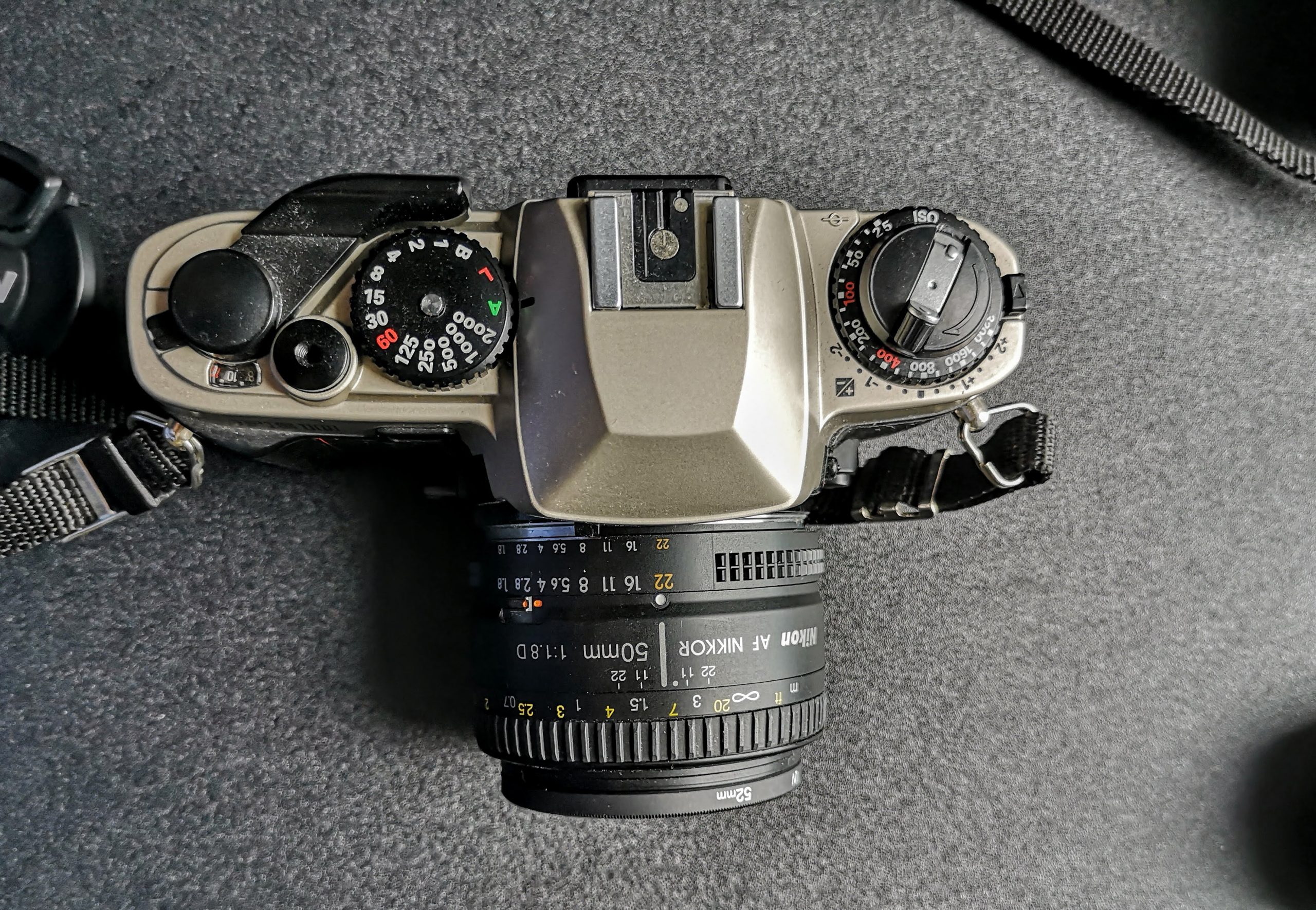
Nikon Series E 50mm 1:1.8

Finally the bargain 50mm Nikon MF prime, the Nikon series E 50mm 1:1.8 often called the pancake 50mm. This basically is optically the same lens as the Nikkor 50mm 1:1.8S which was also used for the 1:1.8D above – it just differs in coating and what the lens is wrapped in. It is tichy compared to the AF lenses and although not exactly pancake flat (more Ice puck) is very small. It also takes 52mm filters.
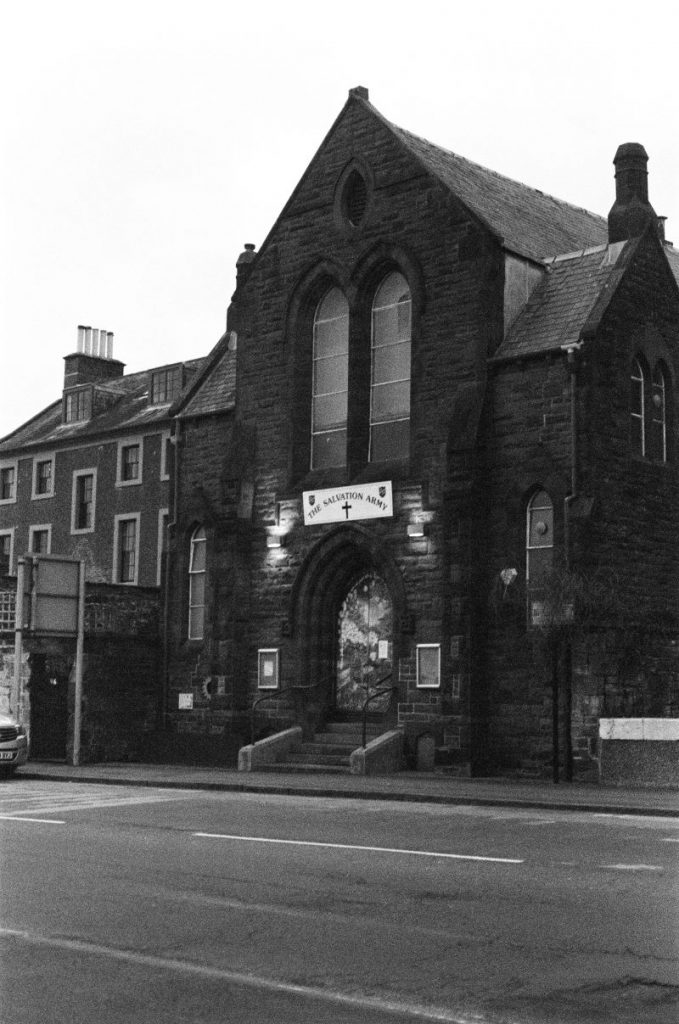
Although the same construction as the 1:1.8D it can only focus down to 0.6m.

Developed for the Nikon EM in 1979 and also aimed at the FG series, it and it’s brethern Series E lenses were ignored as they were plastic. It does look cheap – more like cheap brand M42 lens from the 80’s than a Nikon. But whilst some of the lenses in the range are weak the Series E 50mm is now regarded as a sleeper classic.
Compatibility (or Lack of)
This as we’ll see is a major difference and may well decided your choice. The Yongnuo uses the newer AF-S AF tech. It also is G so it has no aperture ring . This means it will work flawlessly with any dSLR Nikon has made in the proper dSLR age (anything with a D in it). It should also work with the Kodak DCS300 series ‘cos it worked flawlessly on the Nikon Pronea S APS.

The Pronea aside things get a bit more complicated with film cameras. Broadly most latter (post 2000) AF cameras will work fully except for the budget models. These include the F50, F55 and F60 which don’t support AF-S. You can still use it as a manual focus lens. My F75 & F65 work flawlessly with this lens and so should a F5, F6 and F100 & F80.

I say should as Nikon and 3rd party lenses can be an iffy thing. My F90x on paper should work with some metering limitations. It works with my AF-S Nikkor DX lenses and a sigma DX even though they crop awfully. But it doesn’t with this lens. Sometimes it doesn’t recognise it, sometimes it meters but won’t AF and rarely it works. It may be more my aging F90x but Nikon bodies can be temperamental. A flipside is my F65 works fine with this but wont sync with my Nikkor DX lens but will work with my Sigma DX- go figure !

Nikon F-401 Review – the £1.50 SLRSo 90’s models which should support AF-S are more of gamble. Older AF cameras won’t focus but work in a fashion. But here’s where the other issue creeps in – This is a G lens there is no mechanical aperture control – it is all done electronically. This means the lens is taffy on pretty much any manual focus camera Nikon bar the F-301, F-601M (these are essentially stripped back early AF cameras) and possibly the FA which in theory should kinda work in program. Many Early AF cameras can only use this lens in Program or maybe Shutter priority mode. Weirdly however the budget F-401 series should offer PSAM with this lens but as a Manual focus.
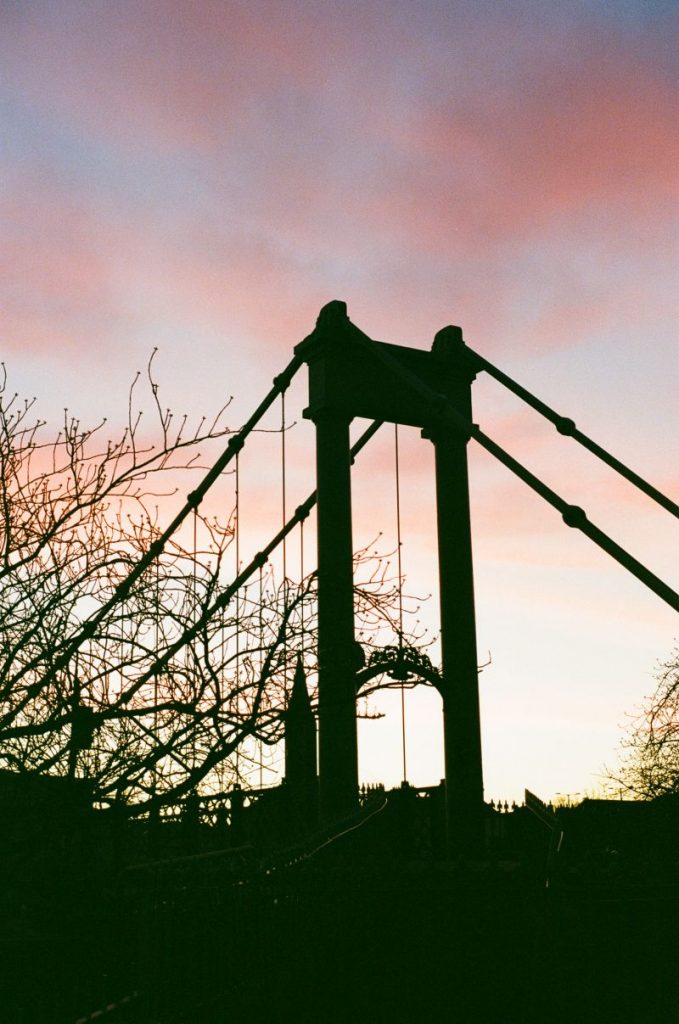
The Nikkor 1:1.8D may well be the better choice if you shoot film. It is AF-D which was supported by all film Nikon AF bodies and isn’t a G class so no issues. you can mount this lens on pretty much any film Nikon body and it just works. The only issue is pre AI revision bodies where there is no meter coupling but otherwise you can use. The problem is digital. My first digital SLR was a D50 for a reason and it’s why I bought a second hand D7000. After the D50 Nikon dropped support for AF-D in its consumer orientated cameras. Okay so you can manual focus this and meter on most but some like the D3400 or D3500 can’t even meter. Prosumer camera legacy support has been better but for the future…. Oh and it works fine on the Pronea BTW.
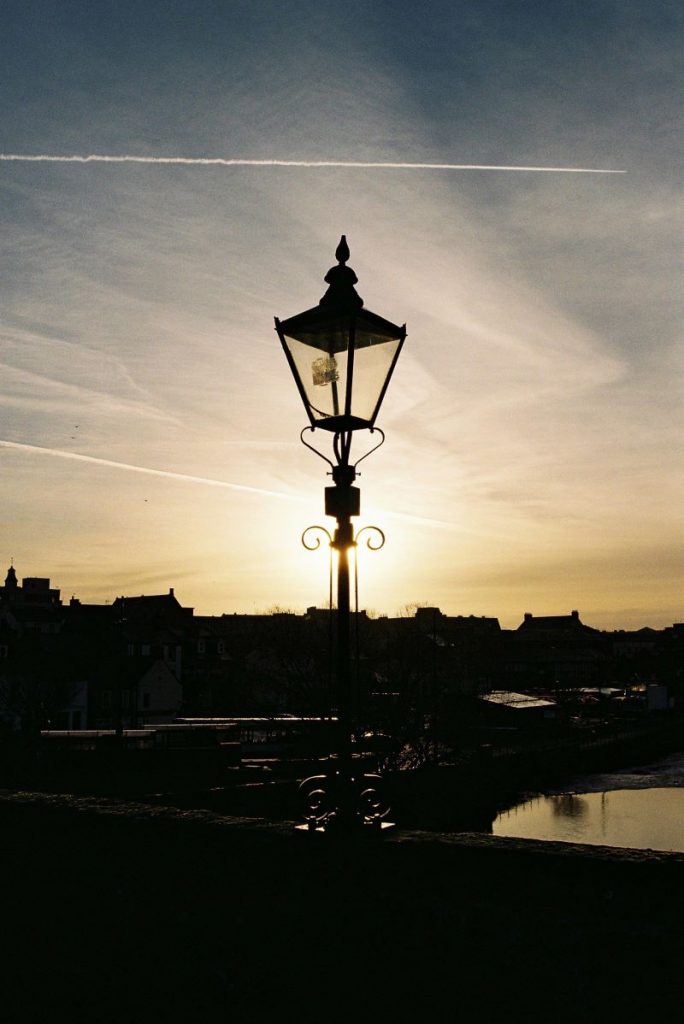
Lastly the E series. This will work on all manual focus Nikon film bodies (stop down for pre-AI metering). As to AF bodies it’s support starts to diminish for metering during the late 90’s but thats not an absolute thing. So my F90x will meter in some modes but my F55, F65 and F75 won’t. You can still use them unmetered and you at least get the advantage of rangefinder assist which is just as well. Likewise my D50 pretty much is the same as those 3 but my later more midrange D7000 will meter. However digitals that meter are in a minority and tend to be the pro end and some mid range models. Some like the D3400 and D3500 wont even work. And for those of you bothered you can use un-metered in S mode on the pronea.

Use
There is little to seperate the Yongnuo from the AF-D noise wise if anything the AF-D is quieter. It isn’t faster either and I found it more prone to having issues in nailing focus compared to the older lens. Overall this wont slow you down but you aren’t getting the purported advantages of AF-S over AF-D.
Manually focusing the lens the Series E is a clear winner but the 1:1.8D is close behind. The Yongnuo’s smaller focal throw makes thing harder but as we’ll see I doubt you’ll be using on anything other than a AF body. That said I found it okay in use on a N2000.
All benefit from Nikon’s Focus assist when used to focus manually on AF bodies.

Results
The short version is that these are not bad lenses. On shot review I felt the 1:1.8D had the edge over the E-series. That might be a genuine difference thanks to the coating but honestly I think it is because the 1:1.8D was being focused by machine not my fading peepers also the E series has seen a lot of action and there is wear in in its helicoid. The Yongnuo trailed but only by a sliver and bear in mind you’re buying this as new for £20-50 cheaper than the 1:1.8D and about £150 less than the 1.8G. This makes its performance/cost value pretty good.
Close up shooting
Direct comparison shot for these cameras were on a cropped frame DX D7000 with default setting. This did mean the E series potential was disadvantaged as you didn’t get full 3D matrix metering but the impact was minimal. Camera was on default settings and the image you see are the unprocessed (bar canvas size reduction all done by ifranview 32 bit) jpegs as shot.
Close shots at f/1.8 – Bokeh me softly
Taking close up Bokeh type shots there is little to separate these in good light. The E Series E looks better but only because you can’t focus in close (0.6 v 0.45m). Now 15cm doesn’t sound a lot but it doubles the depth of field from half to 1cm which is huge difference for a close focus task.
Given they have near identical lens and aperture construction the Bokeh is almost identical here and actually surprisingly good for a trio of medium fast lenses with lovely balls of Bokeh cheesiness with some smearing if that’s yer thing. Yes the 1.4G will be musch better and I personally think the Helios 81-H is better for this (see in a mo) but these are not bad for Bokeh on a budget.



The depth of field is Narrow here. I’d say all 3 have acceptable to good sharpness although as discussed the e series benefits more as it has a slightly wider DoF.
In full frame all 3 are softer in the corners when wide. I didn’t notice that persisting once you get to f/4
To f/4 and beyond
Closing the aperture down is improves sharpness with these lenses getting pretty peachy from f/4 on. On this site you’ll struggle to see a huge difference but the Yongnuo plays close to the Nikons but is just behind. The E series I think overall is just pegged by the 1:18D but that may relate more to focus wear and my crud attempts to manually focus it.



All 3 suffer a bit beyond f/11 with their sharpness which is what you would expect due to diffraction.
Medium and long shots
Broadly little to separate here again although the Yongnuo on some shots is a smidge softer. This is more evident in lower light when the apertures are wider
Aberrations, Distortions & Vignetting
You don’t see any Vignetting on the wide cropped shots on D7000. But there is a subtle Vignetting effect on film (i.e full frame) bodies when all 3 lenses are wide. It isn’t disastrous and pretty much is gone by F/2.8. I’m not aware of it being worse than the 1.8G but bear in mind the 1:1.8D will benefit from in camera correction on some dSLRs whereas the Yongnuo won’t.
Not much in the way of vignetting and actually they all keep their focus to almost as sharp as the centre as they move to the edges. I think the Yongnuo drops off a bit more but again not by much.
Zoom in and they also have some chromatic fringing but it really isn’t bad. Radial distortion is also negligible with a tiny amount of Barrel distortion (the Yongnuo being a smidge worse).
Flare
All flare if wide and shooting into the sun. The Yongnuo has some issues at even f/4-5.6 with side flare. It’s worth picking up a HB-47 hood or a clone for a couple of quid. Narrow the aperture down though and you can get away with things.

Alternatives to these 3 ?
For budget options these 3 are not the only game in town but the other options have even more issues. Here’s a few to consider
Helios 81-N – The temperamental Ukrainian

A Helios with a F mount ? What’s not to love ?
Sadly optically good as this lens is – it isn’t just quite as compatible and suffers from FSU variability when it comes to mounting. Notionally this is a AI lens but most come with a platsic skirt that stops them being mounted on anything other than a Pre AI body (aka Nikkormat). You can pick one up for £40-50 usually with a Kiev-19 (worth buying this way round as the lens isn’t much cheaper on it’s own)
Total Budget Recall – The Holga HL-N
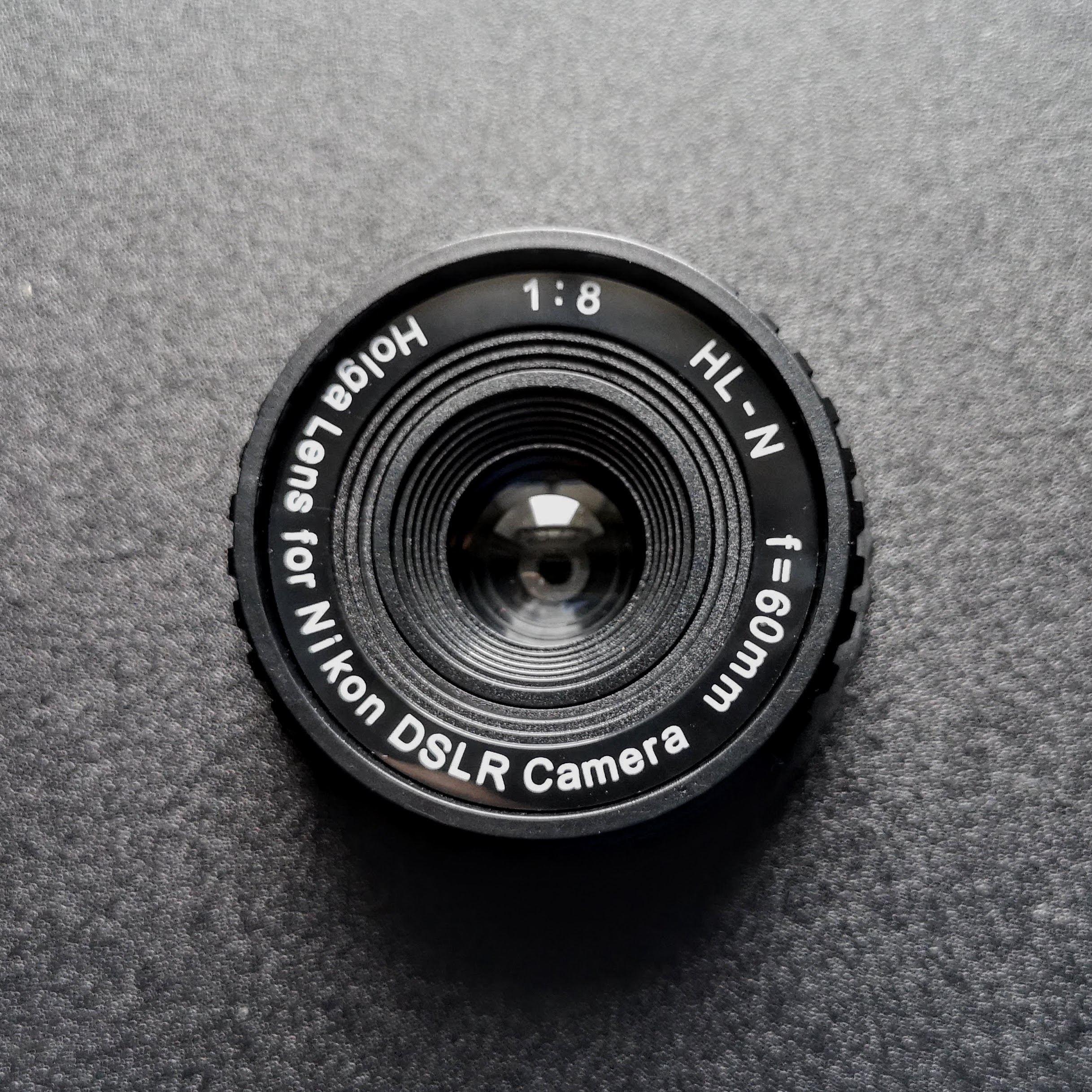
Want a Cheap new lens for your Nikon but only got money for a Takeaway ? Well the HL-N might be for you. A 60mm 1:8 fixed aperture lens which out pancakes the Series E 50mm for just over a Tenner
Of course it’s crap but in a riotously lo-fi way. Even if the focus vaguely worked it is still be a nightmare to focus with a f/8 view. There no metering of course but if you wanna go lo-fi…
Adaptor mania
We often bemoan how digital shooters use adaptors to use vintage lenses on their micro4/3 or alpha mounts. But guess what you can join the game with your Nikon !
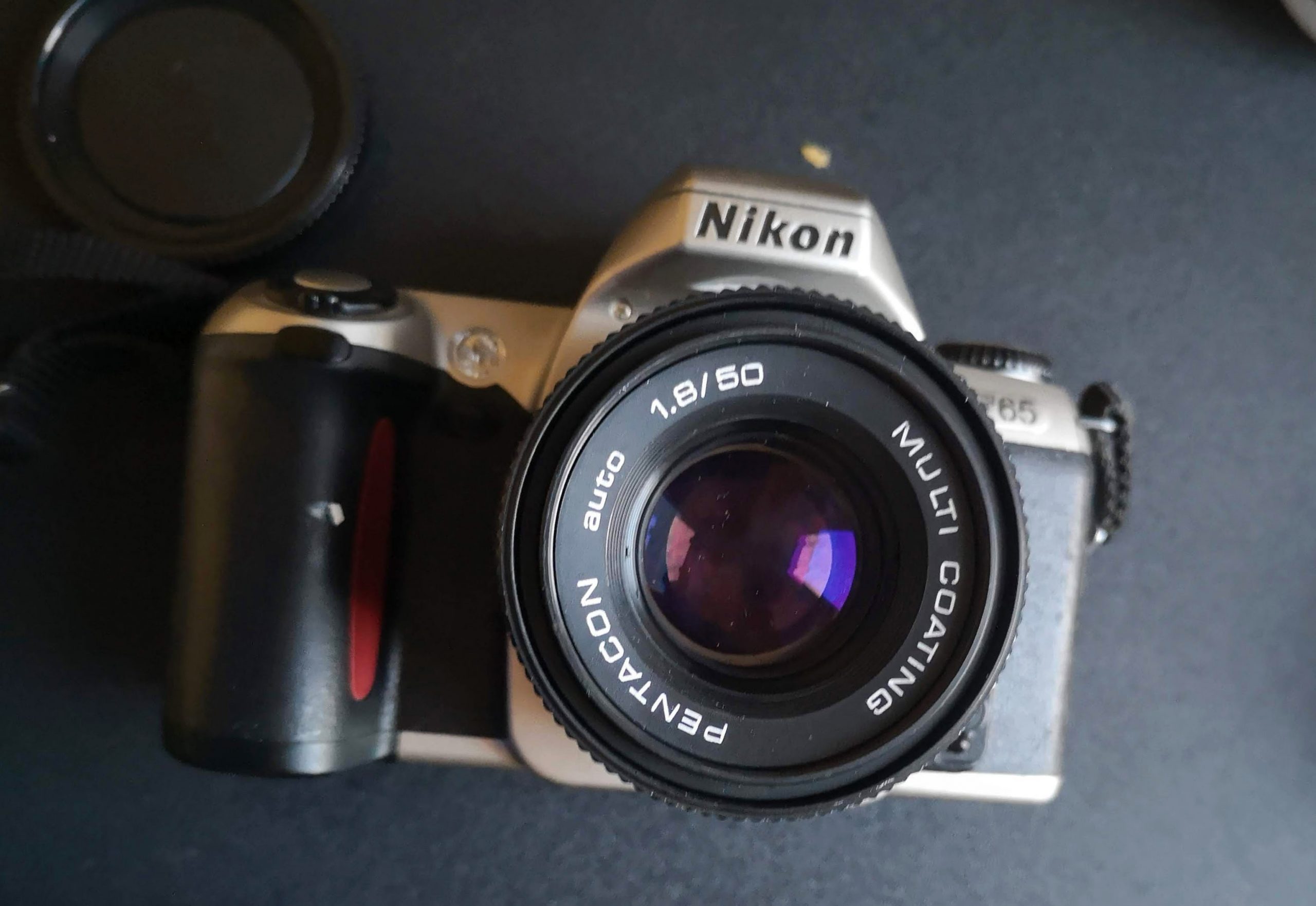
There’s a optical issue to be aware relating to the flange distance meaning that with some mounts you can’t focus properly at infinity. Some mounts like the one use above have a glass lens to correct this (in the above case it slightly over corrects making infinity focus at a shorter point). Aagin no metering is possible but that Pentacon and adaptor was supported the by the rangefinder assist
A range of mounts exist with M42 to F being most logical if budget is involved. You can even use Diana F+ lenses as I’ve discussed before. The adaptors are a few quid but be aware quality can vary.
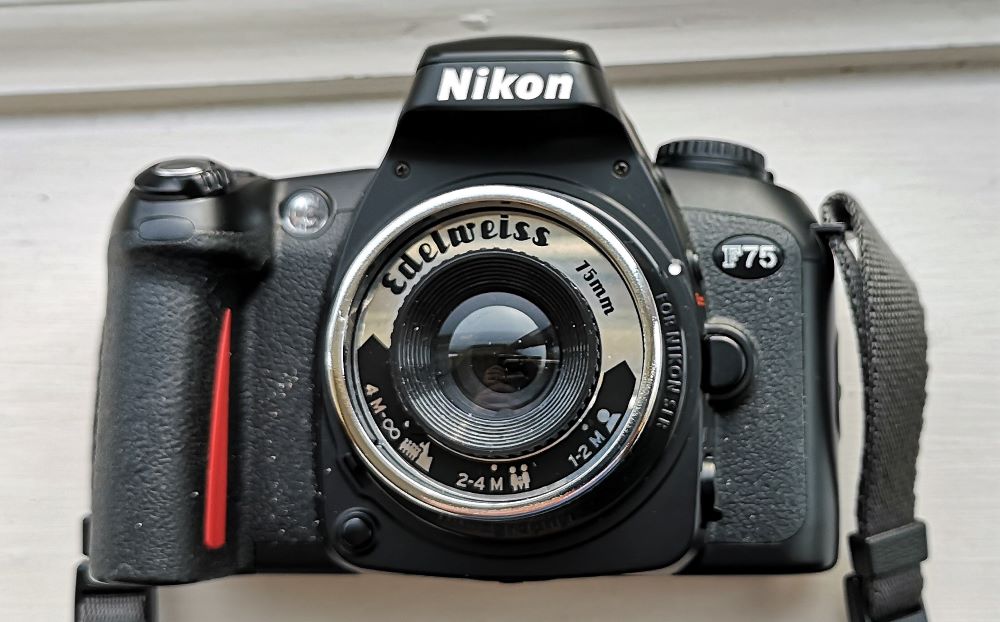
The other Nikon 50mm’s
There are a few although originally you had a choice of either a f/1.4 or f/2 lens – the first f/1.8 only came into existence post the AI changes . The Nikkor 50mm 1:1.8S is basically the same as both the Series E and 1:1.8D but just wrapped in metal and with different coating. 3 Versions exist with only the Mark I having rabbit ears allowing it to be factory fully compatible (i.e. meter-able) on your Nikkormat or Nikon F. You’r gonna pay over £100 for what is basically a posher series E. The older AF Nikkor 50mm 1:1.8 (non D) offers nothing over the 1:1.8D and is harder to find.

You can get Older lenses like the Nikkor-S which has a lovely vintage feel but you’ll not be able to use with post AI revision cameras unless they’ve been retooled,
Final Analysis – What lens would suit you ?
All of these are good but they will suit photographer differently. What is telling is they’re all fraction of the current Nikkor 50mm AF-S 1.8G lens. Which whilst technically superior to these (and that’s debatable with the 1:1.8D) most of us mortals wont use it to that level and will get similar results. However there is a winner with some Caveats
Best in class the AF Nikkor 50mm 1:1.8D unless you shoot lots of cheap digital.

It’s telling that this the prime I tend to use.
The AF-D Nikkor is undoubtedly the most versatile lens here. You could use it on the current top dog dSLR like the D5, D850 & D500 but also on an orginal 1950’s Nikon F. It leads just optically and at a 3rd of the price of the current 50mm 1.8G AF-S makes sense for film shooters with AF era film cameras or older. But it is supported fully on only a small number of digital cameras. Granted you can manually focus it but it loses advantage here. If you shoot a mixture of film and digital it will come down as a toss between this and….
Yongnuo YN50mm F1.8N – For the Digital shooter whom might dabble with a newer film body

If you’re predominately a digital shooter with a few more modern AF film bodies that support AF-S, the Yongnuo makes most sense. It’s a good lens and will be a step up from the kit zooms you cameras came with. Yes it is pipped here by the the 2 older Nikon lenses but only just. And I suspect the Nikkor 1.8G would do the same. But it really doesn’t lag that much behind and is a quarter of the price of 1.8G.
It’s G class makes it useless for any manual cameras bar the F-301(N2000) and the F-601M and also you will have limitations on older AF bodies. All that said this is a serious contender lens for around Fifty quid and that can’t be sniffed at.
Nikon Series E 50mm 1.8 – A budget bargain for manual shooters

If you shoot only manual focus the series E is one for you. It is basically the same lens as the other 2 but for about 20 quid and will work with all manual focus bodies. Moving into the AF and dSLR ages support diminish. But this isn’t a linear thing so I can mount and use with my F75 but without metering. Whereas my D7000 which came along a decade later will happily meter this lens.
It is very compact as well but wear potentially will be an issue but for around £20-30 it is worth getting your hands on and there’s lots of them out there.
References & Other sources
Ken Rockwell‘s excellent Nikon Lens compatibility guide is worthy of trying to unpick things for your body but bear in mind I’ve found inconsistencies (i.e. my F65 loves the Yongnuo but wont work with a AF-S-D Nikkor whereas I get the reverse with my F90x go figure). I’d also tarry to read his review of the 1:1.8D . MIR is perhaps the best resource for exploring Nikon gear -here are the links to the 1.18D and Series E. Shutters In the Night has a really interesting review of the Yongnuo v 1.8G in very low light which is worth a read for extreme testing. Casual Photophile has a nice review of the series E worth a read.

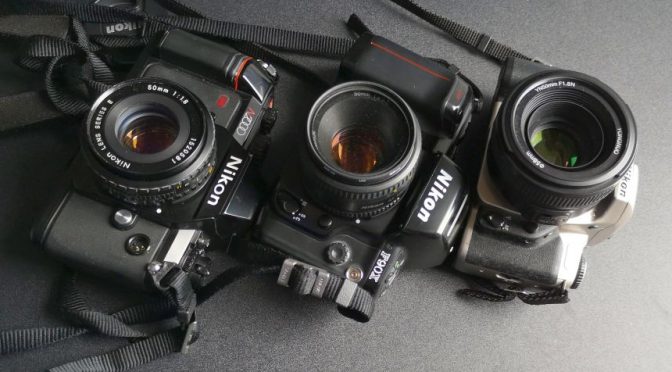
Great roundup. I also advocate for the 50mm f/2 AI Nikkor, which goes for under $100 all the time. If you don’t mind indexing your lens the non-AI versions are even less expensive. I have the 50/2 AI and the 50/1.8 E and the 50/1.8 AF-D, and they’re all plenty good!
Thank you so much for helping us to appreciate how privileged we are to use some ‘old ‘ glass both digitally and with film and get great results without breaking the bank. We all have our favourites. Mine has to be the 1.8 AI-s. Many thanks again
Andrew